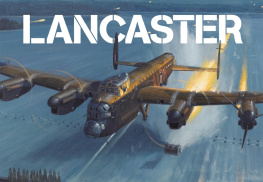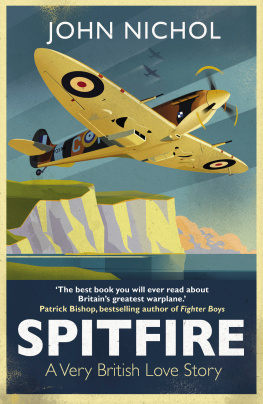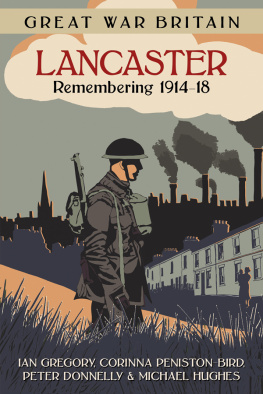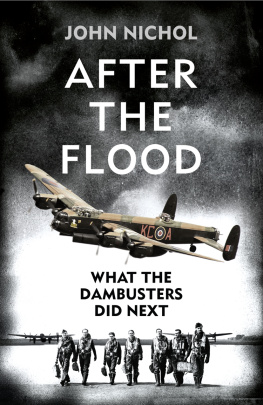John Nichol - Lancaster: The Forging of a Very British Legend
Here you can read online John Nichol - Lancaster: The Forging of a Very British Legend full text of the book (entire story) in english for free. Download pdf and epub, get meaning, cover and reviews about this ebook. year: 2020, publisher: Simon & Schuster UK, genre: Non-fiction. Description of the work, (preface) as well as reviews are available. Best literature library LitArk.com created for fans of good reading and offers a wide selection of genres:
Romance novel
Science fiction
Adventure
Detective
Science
History
Home and family
Prose
Art
Politics
Computer
Non-fiction
Religion
Business
Children
Humor
Choose a favorite category and find really read worthwhile books. Enjoy immersion in the world of imagination, feel the emotions of the characters or learn something new for yourself, make an fascinating discovery.
- Book:Lancaster: The Forging of a Very British Legend
- Author:
- Publisher:Simon & Schuster UK
- Genre:
- Year:2020
- Rating:5 / 5
- Favourites:Add to favourites
- Your mark:
- 100
- 1
- 2
- 3
- 4
- 5
Lancaster: The Forging of a Very British Legend: summary, description and annotation
We offer to read an annotation, description, summary or preface (depends on what the author of the book "Lancaster: The Forging of a Very British Legend" wrote himself). If you haven't found the necessary information about the book — write in the comments, we will try to find it.
Lancaster: The Forging of a Very British Legend — read online for free the complete book (whole text) full work
Below is the text of the book, divided by pages. System saving the place of the last page read, allows you to conveniently read the book "Lancaster: The Forging of a Very British Legend" online for free, without having to search again every time where you left off. Put a bookmark, and you can go to the page where you finished reading at any time.
Font size:
Interval:
Bookmark:

In memory of
Grey Atticus Fox Grumbridge
17 November 8 December 2019
This book is dedicated to all the courageous
men and women involved with the Lancaster
bombers wartime operations.
FOREWORD
Ninety-three-year-old Ron is a veteran of Royal Air Force Bomber Command, where he served as a rear gunner on the Lancaster bomber. He is the only Second World War veteran residing in the home, which he loves. He likes to get involved in the many activities on offer; the crafts, coffee mornings and more. A widower, living alone, Ron enjoys the company.
He is surrounded by memorabilia from his time in the RAF; books about Bomber Command and his beloved Lancaster crowd the shelves. A large wooden carving of St Evre church in the small village of Mligny-le-Grand in north-east France has pride of place on the wall behind him. Beneath it, on the floor, sits a framed print entitled The Eternal Salute , depicting a wartime Lancaster surging through a turbulent, overcast sky. In the corner of the picture, above the clouds, five aircrew gaze into the distance.
It is not a specific aircraft, or five particular young men, but a simple tribute to the thousands of Lancasters downed during the Second World War and the many members of Bomber Command who gave their lives. A tribute to the many friends and colleagues Ron lost in battle. The print cost him 100 a significant sum for the war pensioner. But he wont be hanging it here; he is taking it to Mligny-le-Grand in a few weeks. He has some difficulty walking or standing for extended periods these days, but age and weary bones will not prevent him from making this journey. It has a very personal significance for Ron. It harks back to a time when his life hung in the balance.
The other residents and staff in his home regularly ask him what he did in the war. He answers their questions politely but keeps much of the detail to himself. Many of those memories, though seventy-three years old, are still raw and distressing. More importantly, Ron doesnt want to seem to be boasting about his role in the conflict.
I have experienced this reluctance to talk freely with almost every veteran I have interviewed; they have to be pressed, to be cajoled to open up. As part of the military family, albeit a somewhat younger member, I understand their caution. While I could never compare my own experiences as a young RAF Tornado navigator over a mere seven weeks during the first Gulf War in 1991 with Rons countless sorties in the skies above Germany in the 1940s, I can certainly relate to the fear, exhilaration and desperation of battle, having been shot down over Iraq in January 1991, then captured, tortured and paraded on television screens around the world.
My personal war had been relatively short but deeply unpleasant. In the aftermath, I attended a number of military functions and began to meet some of my forebears who had flown the early bombers into the heart of German-occupied Europe during the darkest days of the Second World War. I noticed immediately that they were more comfortable sharing their experiences of combat over a beer with someone who could really understand its complex and often confusing cocktail of fear and excitement. They were more guarded with those outside the military family, who they worried might think they were shooting a line or exaggerating their involvement in a conflict that defined a generation and changed the shape of the modern world. The refrain I continue to hear most often is, I didnt do anything extraordinary. There were no heroics. I just did the same job everyone else was doing.
On one level, Ron Needles reluctance to go into detail is entirely understandable; he was doing the same as all the other young men and women who stood in the way of the existential threat posed by Nazi Germany. However, both individually and collectively, they were a truly exceptional generation.
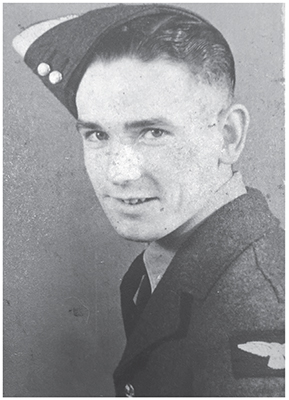
Ron Needle during training as a rear gunner
Excited chatter fills the aviation halls at the RAF Museum in Hendon, north London, as parties of young schoolchildren skip around the iconic exhibits. Ron Needle and I are less vocal, but still delighted to be at the heart of this incredible display. We have come to visit one of the few surviving Lancaster bombers so we can share his memories of the giant aircraft. His legs are weak now, so I push his wheelchair slowly past some of the other items tracking the history of flight from the Wright brothers first foray in 1903 to the jet-powered air force of today. As the kids dash from hall to hall, we meander, revelling in our shared enjoyment of time spent in the skies.
We pause at the wood and canvas string bags of the First World War and wonder how anyone could have had the courage to take these flimsy machines beyond the runway, let alone into battle. I show Ron the Tornado I spent much of my RAF career flying; he gasps when I tell him it was capable of around 600 miles per hour. Sitting beneath the wing is a WE177 tactical nuclear bomb, the type of weapon I spent so much time preparing to use against our Cold War enemies.
It is sobering for us to reflect that a handful of WE177s could have caused exponentially more devastation than the astonishing thousand-bomber raids Rons Bomber Command colleagues embarked upon during the Second World War. One display is playing Winston Churchills famous never in the field of human conflict tribute to the incredible bravery and sacrifice of The Few during the Battle of Britain. Ron remembers listening with his family to those speeches as a schoolboy: We were always inspired by Churchills broadcasts, though I didnt really understand how I would become involved in the war myself.
Finally, there she is, in a cavernous hangar, dwarfing all other exhibits. S-Sugar towers above us, by far the biggest beast in Hendons jungle. Although now confined to the ground, she is the worlds oldest surviving Lancaster bomber, flying her first operation into the heart of Nazi Germany in the summer of 1942. Her final missionwhen no one else could, and the statistics are as impressive as the aircraft herself.
The four mighty Merlin engines mounted along the 102ft wingspan gave her a top speed of around 280mph and a range of some 2,500 miles. With a 69ft-long fuselage, the aircraft was essentially built around a 33ft bomb bay designed to carry a 14,500lb payload. In later years some Lancasters would be converted to deliver the massive 22,000lb Grand Slam earthquake bomb; the largest conventional weapon dropped during the Second World War.
At the height of the conflict, over a million men and women were employed producing the aircraft and its myriad parts at hundreds of factories on two continents. More service personnel were involved in flying and maintaining the Lancaster than any other British aircraft in history.
The average age of the seven-man crew was a mere twenty-two. Of 7,377 Lancasters built during the war, over half (3,736) were lost to enemy action and in training accidents. S-Sugar and Ron Needle are among the lucky survivors. With 137 ops under her belt, S-Sugar is one of only twenty Lancasters to have completed over one hundred wartime missions. A neat tapestry of falling bombs depicting her incredible tally of ops is painted on the fuselage under the cockpit. Beneath the bombs is inscribed Germanys Reichsmarschall Hermann Grings arrogant boast, No enemy plane will fly over the Reich territory.
Gring had been very wrong.
The RAFs bomber squadrons carried out offensive operations from the first day of the war until the last, more than five and a half years later. They flew nearly 390,000 sorties and dropped around 1 million tons of explosive on enemy targets. Over 10,000 aircraft were lost.
Font size:
Interval:
Bookmark:
Similar books «Lancaster: The Forging of a Very British Legend»
Look at similar books to Lancaster: The Forging of a Very British Legend. We have selected literature similar in name and meaning in the hope of providing readers with more options to find new, interesting, not yet read works.
Discussion, reviews of the book Lancaster: The Forging of a Very British Legend and just readers' own opinions. Leave your comments, write what you think about the work, its meaning or the main characters. Specify what exactly you liked and what you didn't like, and why you think so.





